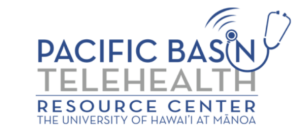Implementation of Language Access
Accommodating limited English proficient (LEP) individuals
Who is a Limited English Proficient Individual (LEP)?
An LEP individual refers to a person whose primary language is not English and has limited ability to speak, read, write, or understand English.
Requirements for Providing Healthcare Services to an LEP Individual:
All state and federal agencies are required by law to provide an LEP patient with competent language assistance services (interpretation/translation) free of charge.
Federal Law:
- Title VI of the Civil Rights Act of 1964 (42 USC § 2000d) prohibits national origin discrimination and requires recipients of federal financial assistance to take reasonable steps to make their programs, services and activities accessible by eligible LEP persons.
- 45 C.F.R. Section 80.3(b)(2) (Department of Health and Human Services) requires recipients of federal financial assistance from HHS to provide access to LEP individuals.
- Executive Order 13166 Improving Access to Services for Persons with Limited English Proficiency requires each federal agency to prepare a plan to improve access to its federally conducted programs and activities by eligible persons with LEP.
- The Affordable Care Act of 2010, Section 1557 Protections for Individuals with Limited English Proficiency is consistent with longstanding principles under civil rights laws. Covered entities are required to take reasonable steps to provide meaningful access to LEP individuals who are eligible to be served or likely to be encountered within the entities’ health programs and activities.
State Law:
- Hawaii’s Language Access Law under HRS 321C requires state agencies and covered entities to establish a language access plan, take reasonable steps to ensure meaningful access to LEP persons is provided, provide oral interpretation (live interpreter) services that are competent and timely, and provide written translations of vital documents.
- Hawaii Language Access Plan (FY 2022-2024)
- For more information, view this Hawaii Language Access & The Law Brochure
How to Prepare for a Telehealth Visit for an LEP Patient

Assess the patient’s accessibility and technology needs. Provide patients with the option to indicate any specific requirements when scheduling the appointment, such as through an intake form ahead of time.
- Interpretation vs Translation: Interpretation pertains to verbal communication in real time, whereas translation deals with written materials.
- An interpreter or translator (individual or company) can be found on the American Translators Association (ATA) website.
Determine the language(s) spoken by your patient. This may be identified on a patient intake form. Using an “I speak” card can also help identify their primary language.
Review materials that need to be translated. All “vital documents” containing information regarding federal services and/or benefits, must be translated as per federal regulations. For example, consent and complaint forms, notices of rights, and notices advising LEP individuals of free language assistance.
Effective Communication Between a Provider and LEP Patient:
In order to fully benefit from a telehealth consultation, patients must be able to effectively comprehend and communicate with their healthcare provider. Here are some considerations to keep in mind.
- Be patient, avoid filler words (“um,” “like,”), slang, abbreviations, contractions (i.e. “it is” instead of “it’s”), use gestures (i.e. pointing, using demonstrations), and pause between words.
- It is strongly advised to work with a certified medical interpreter instead of a companion interpreter (such as a family member or friend). Medical interpreters receive training in linguistic and interpreter ethics to ensure that the information being relayed to the patient is accurate and allows for smooth communication.
- A companion interpreter may be used if:
- There is an emergency and a certified interpreter is not available.
- A patient requests to use their friend or family member (over 18 years old).
- This may not be permitted if there are concerns that the interpreter may be partial, unfair, or unable to perform the task effectively.
Using Interpreters & Translators on a Video Conferencing Platform:
Platforms for video conferencing, like Zoom and Doxy.me, provide the option of adding an interpreter to the telehealth appointment, enabling real-time translation. If you are using Zoom, this platform also provides the option to enable manual captioning by a third person assigned by the host (provider). For more information, view instructions below.
Zoom
Doxy.me
